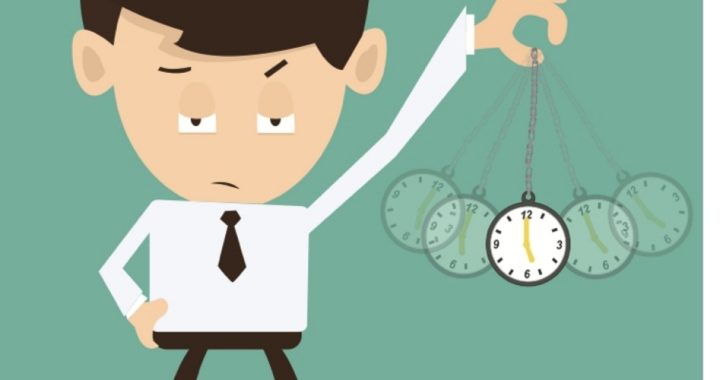
Last month, the White House’s Social and Behavioral Science Team published its first annual report on the effectiveness of behavioral science to achieve policy change. President Obama has been an advocate of using behavioral psychology on citizens for the purposes of policymaking, despite criticisms from notable individuals such as Bill Shughart, professor of public choice at Utah State University, who argue that the behaviorists “are saying that you, consumer, are stupid.” And despite the use of taxpayer dollars to fund this unconstitutional and downright frightening team, the findings were not exactly monumental.
Politico reports that the president officially adopted the notion of using behavioral psychology in policymaking when he launched the White House Social and Behavioral Science Team (SBST) last year. However, his affinity for the use of this science to influence the American people was clear long before that in his selection of Cass Sunstein as his regulatory czar. Sunstein authored a book on the subject, entitled, Nudge — Improving Decisions About Health, Wealth, and Happiness. Sunstein’s book provides a variety of behavioral psychology measures that can be taken to “nudge” Americans toward healthier lifestyles while causing them to think that in fact they are making the decisions themselves.
Sunstein has indicated that the presence of too many choices can be confusing to people. In describing the premise of his book, he virtually claimed that the American people were too ignorant and undisciplined to make proper decisions. “We think there is a little Homer Simpson in all of us,” he asserted. “Sometimes we have self-control problems, sometimes we’re impulsive. In these circumstances, both public and private institutions, without coercing, can make our lives a lot better.”
According to Sunstein, “Once we know that people are human and have some Homer Simpson in them, then there’s a lot that can be done to manipulate them.” It is that very some philosophy that was involved in the creation and selling of ObamaCare.
The SBST report’s findings are not exactly groundbreaking. The study found, for example, that young people respond to text messages, which only a quick glance across a school campus would reveal. However, the Department of Education and the SBST partnered with a nonprofit organization to improve the low matriculation of low-income students who had been accepted to college but did not matriculate for their freshman year. The non-profit organization elected to send text messages to select students with reminders to complete certain necessary tasks before they arrived on campus, there was a nine-percent increase in the number of low-income students matriculated.
The report also states that adding a prompt on a federal form asking vendors to promise that they’d submitted accurate information has resulted in more honest answers.
Politico writes,
On certain transactions, federal vendors are required to pay a fee on quarterly sales, which they self-report through an online form. To improve honest reporting, the General Services Administration — the agency that manages the function of different agencies — added a small prompt to the top of the form asking vendors to promise they were submitting accurate information. Lying on the prompt has no legal repercussions, but it still led to a $1.59 million increase in fees in one quarter, suggesting that the respondents were more fully reporting their sales.
The study also found that while most people respond to “peer pressure” of sorts, doctors do not. In that study, people that saw sentences like “9 out of 10 people pay their taxes on time” were more likely to also pay their taxes on time. A similar experiment was attempted on doctors. A letter was sent to physicians who had prescribed more medications than their colleagues informing them that they were prescribing medications at abnormally high rates, but the letters had no impact on the prescription rates.
The report also found that the use of e-mails to ask Americans to complete a particular task, whether it was to pay their student loans or sign up for retirement, resulted in an increase in people completing those tasks. Similarly, the report found that letter communications were effective as well.
Did the government really need to pay a team of people to discover these vast wonders?
According to Politico’s Danny Vinik, the projects found in the report do not quite entail “nudging” in the way behavioral psychologists would define it, as they did not involve changing the “choice architecture” for those involved.
For some, that was disappointing. “I’d like to see more economic ideas get involved,” said Richard Thaler, an economist at the University of Chicago who co-wrote Nudge with Sunstein, “but so far that hasn’t happened.”
Nevertheless, the SBST believes they’ve made significant headway with their findings, as evidenced in the introductory letter to the report. “A strong body of evidence demonstrates that research insights about behavior, when incorporated into the design of Federal programs and policies, have significantly improved Americans’ lives, whether by boosting retirement savings nationwide or helping more low-income students get to college each year,” according to John P. Holdren, assistant to the president for science and technology director, Office of Science and Technology Policy.
But despite what the report has revealed, the Obama administration has heavily relied on the use of behavioral science to bring about significant policy change.
A prime example involves ObamaCare. Last year, it was revealed by ObamaCare architect Jonathan Gruber that the Obama administration deliberately relied on a lack of transparency in order to get the president’s healthcare law passed, adding that the legislation was written in an intentionally vague manner because of “the stupidity of the American voter.”
Fox News noted that Gruber is an MIT professor who played a role in the design for ObamaCare. He appeared at a panel hosted by the Penn Leonard Davis Institute of Health Economics on October 17, 2013, which was captured on video but did not gain media attention until 2014, wherein he admitted that though the individual mandate was upheld by the Supreme Court because it was perceived as a tax, it is in fact not a tax.
Gruber explained, “This bill was written in a tortured way to make sure CBO [the Congressional Budget Office] did not score the mandate as taxes. If CBO scored the mandate as taxes, the bill dies.”
Gruber’s sentiments mirrored those that Bill Shughart warned was generally true of behaviorists, that the consumer is in fact stupid. “Lack of transparency is a huge political advantage. And basically, call it the stupidity of the American voter or whatever, but basically that was really, really critical for the thing to pass.”
Gruber outlined exactly what was needed to be done in order for the bill to pass:
In terms of risk rated subsidies, if you had a law which said that healthy people are going to pay in — you made explicit healthy people pay in and sick people get money, it would not have passed.
Gruber added that he wished the law could have been transparent, but that he’d “rather have this law than not.”
Ah, the plight of the elite behaviorist!
And once again, the taxpayers are footing the bill for another unconstitutional government entity, this time, one that hopes to achieve a “mind-control” initiative.




